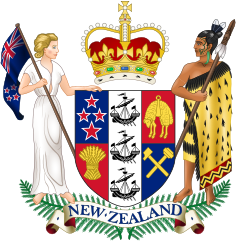| Constitution Act 1986 | |
|---|---|
 | |
| New Zealand Parliament | |
| |
| Passed | 13 December 1986 |
| Commenced | 1 January 1987 |
| Amended by | |
| 1987, 1999, 2005 | |
| Related legislation | |
| New Zealand Bill of Rights Act 1990, the Electoral Act 1993 | |
| Status: Current legislation | |
The Constitution Act 1986 [1] is an act of the New Zealand Parliament that forms a major part of the constitution of New Zealand. It lays down the framework defining fundamental political principles of governance, and establishes the powers of the executive, legislative and judicial branches of state. It outlines the roles and duties of the monarch, the governor-general, ministers and judges. The Act repealed and replaced the New Zealand Constitution Act 1852 and the Statute of Westminster, and removed the ability of the British Parliament to pass laws for New Zealand with the consent of the New Zealand Parliament.